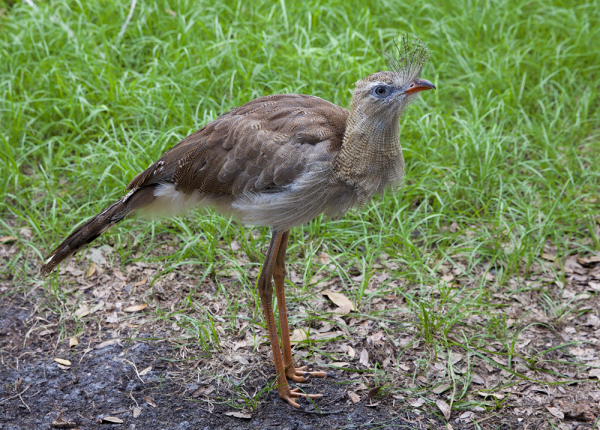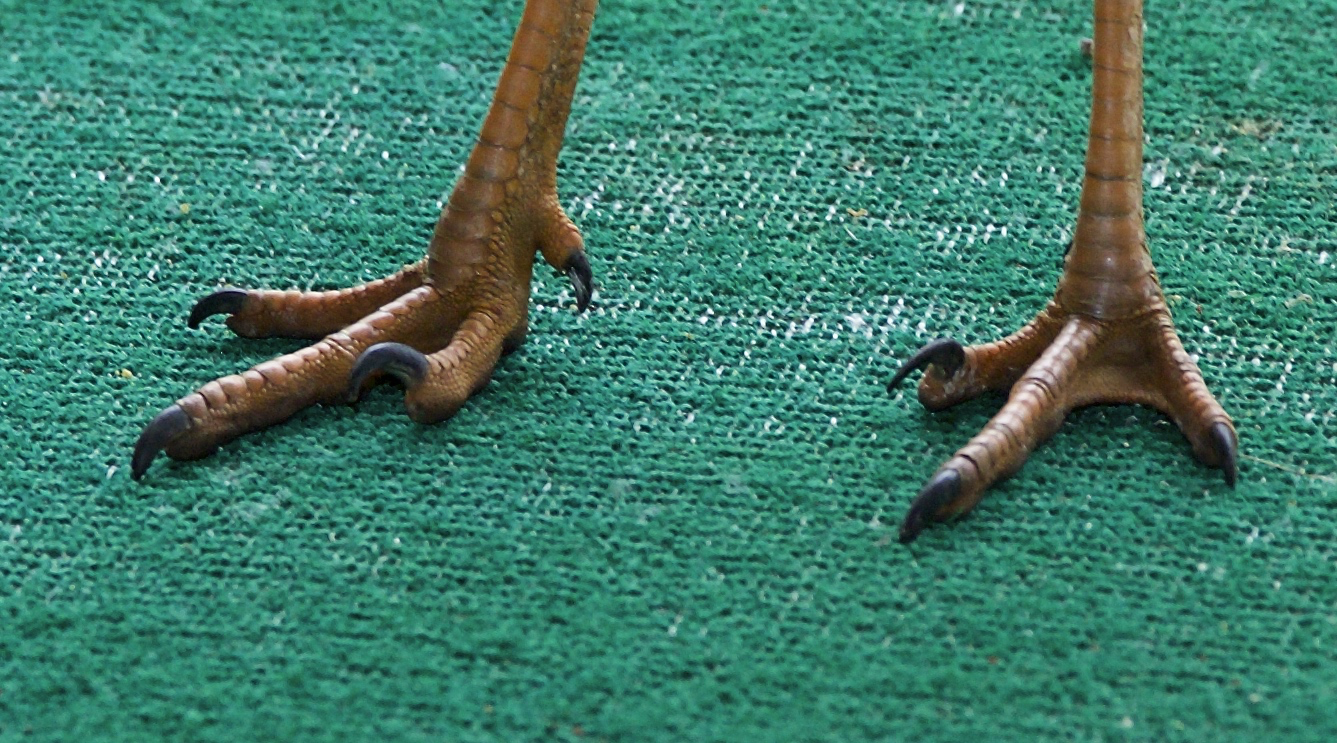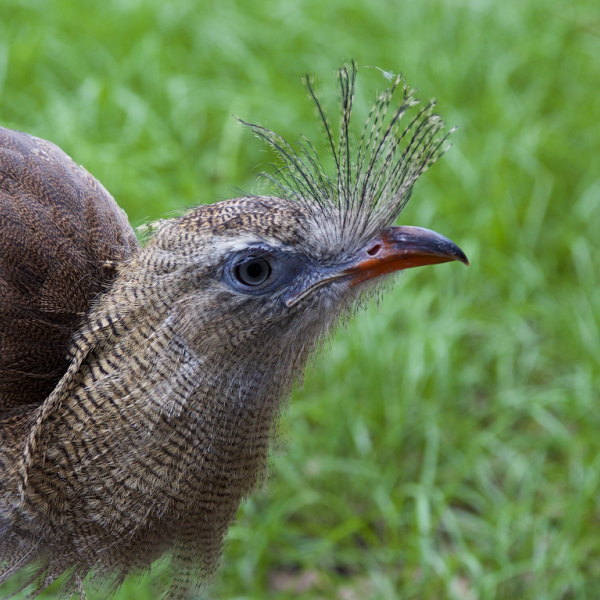Did you know?
- The Red-legged Seriema is one of the few animals that will eat venomous coral snakes.
- They slam their prey to the ground or on hard surfaces like rocks to kill it and break up any bones prior to eating it.
- Seriemas have been known to run at speeds of up to 40 mph (70 km/h) and only fly when absolutely necessary to escape a predator or reach a perch.
- If prey is too large to swallow whole, a Seriema will hold the item in its beak while using its very sharp, sickle-like claw, found on the second toe, to tear it into smaller bites.
- They share a similar ecological niche with Secretarybirds, which are found in Africa.
Where they live
Red-legged Seriemas live in the dry, open grasslands and scrub habitat of central and eastern Brazil to eastern Bolivia. They can be found as far south as Paraguay, Uruguay, and northern Argentina. They are among the largest ground-dwelling bird in the Neotropics, second only to Rheas.
While they are most commonly found in grassy savannas, they can also be found at elevations as high as 6500 feet (2000 m) above sea level. They will frequent areas that have recently been burned by fire to gain easy access to prey.
What they do
Seriemas spend most of their time walking through grasses and scrublands in pair or small groups while looking for food. They only fly when required to avoid predators or to perch on tree branches. They are territorial and call, often performing a duet with a partner, in the mornings. Their vocalizations are a series of loud, high-pitched yelps, and will use them regularly to respond to other pairs in nearby territories.
Seriemas breed during the rainy season which varies based on the region in which the birds live. The males perform a display that includes extending the wing to show off flight feathers and strutting in front of the female that they are courting. Occasionally, fights between rival males have been observed and primarily involved kicking at one another.
What they eat
Red-legged Seriemas feed on a variety of small animals including mammals, reptiles, and birds. They are one of the few animals that will kill and eat venomous coral snakes. They are well known for how they kill their prey—by slamming it on the ground or a hard surface such as a rock. This not only kills the prey, but also helps to break up the bones so that it is easier to swallow in one gulp.
Nest, eggs, and young
Seriema nests are typically built low in trees (3-9 feet or 1-3 meters) as the adults prefer to be able to reach into the nest from the ground by short hops or flutters rather than flight. Both adults collect sticks to build the nest and then line it with mud and leaves.
Seriemas typically lay two eggs at a time, which are white in color and have some brown spots spread across the shell. After the female sits on the eggs, or incubates them, for 27-28 days, the young will hatch. Both adults help to take care of the nestlings by bringing food back to the nest and feeding the young. The nestlings fledge, or leave, the nest when they are between 12-15 days old and then spend their time following their parents while learning how to hunt and kill prey. They reach full maturity at between four to five months.
Related Research
- The Seriema was just recently defined as a raptor.
- McClure, C., S. Schulwitz, D. Anderson, B. Robinson, E. Mojica, JF Therrien, M. Oleyar, and J. Johnson. 2019. Commentary: Defining Raptors and Birds. Journal of Raptor Research. DOI: 10.3356/0892-1016-53.4.419










